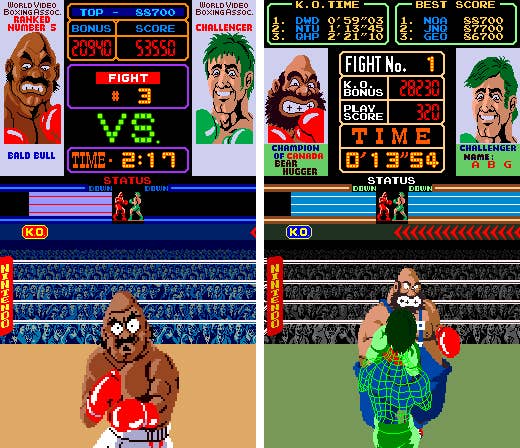Punch-Out!!, the Swan Song of an Arcade Legend
30 years ago, Nintendo dropped the mike on its arcade roots with a stunning boxing sim.
This article first appeared on USgamer, a partner publication of VG247. Some content, such as this article, has been migrated to VG247 for posterity after USgamer's closure - but it has not been edited or further vetted by the VG247 team.
What a difference five years can make. Just half a decade after a brush with disaster precipitated by Radar Scope, Nintendo had established itself not only as the purveyor of a world-class arcade franchise (in Donkey Kong) but also as an up-and-coming successor to the console market vacuum left by the collapse of Atari and its competitors.
1984 saw Nintendo's Famicom make serious headway in the Japanese home market, quickly leaving behind rival platforms Sega SG-1000 and the MSX hybrid computer. In fact, the Famicom was doing so well and involved so few financial risks relative to the arcade market -- which was beginning to decline following the golden age of the early '80s -- that Nintendo was ready to pack it in and shift its focus entirely to consoles.
But that's OK, because before they reduced their coin-op presence to a series of pay-for-time NES demo kiosks, Nintendo delivered quite the coup de grace: A vibrant arcade boxing game called Punch-Out!!
Games had dabbled in boxing before Punch-Out!!, but nothing that had come before had come close to offering the level of presentation and action Nintendo piled into its take on the topic. By putting to use a scaling graphical effect -- something Sega would master in later years with its "Super Scaler" technology -- Nintendo was able to present its boxing with an over-the-shoulder perspective that shamed the competition. With its huge, cartoonish sprites, Punch-Out!! resembled a Laser Disc game, but it didn't rely on the cheat of streaming, pre-rendered video to wow players. Its graphics ran in real-time, meaning there were no awkward pauses or loading between actions. Just fast, fluid slugfests.

Some clever design work allowed the game to make use of its close-in perspective without the player's huge sprite getting in the way: During matches, the protagonist was rendered as a bright green grid, making him largely transparent in an age before alpha channels and transparency layers -- you could see right through your on-screen avatar to watch your opponent's moves.
Admittedly, those moves were considerably less intricate than in the more famous NES version of the game. The home conversion traded visual splendor for more refined game mechanics; the bad guys weren't nearly as large as in the arcade game, and the protagonist was reduced to a comical waist-high wimp, but the roster of opponents expanded considerably and their tells became far more interesting. In the arcade, you basically just watched for their eyes to flash and hoped for the best.

Make no mistake, though: Punch-Out!! was no mere prototype waiting for something better to come along. It was a perfect arcade sports game, fast-paced and visually striking. It sounded great, too, as a digitized announcer called out moves and encouraged you to climb to your feet when you failed. It's a similar experience overall to the NES game, even incorporating many of the same characters, but it's different enough to feel wholly unique.
Of course, like so many classic Nintendo arcade games, it may as well have never existed for all that the company seems eager to brush it under the carpet. It's a pity, because its unusual cabinet structure -- with two screens stacked on top of one another, one dedicated to displaying fight stats -- would work quite nicely on the company's modern-day dual-screen handhelds. In any case, it was quite the coin-op finale -- or close enough, since Nintendo's final two original releases, Super Punch-Out!! and Arm Wrestling, were based on the hardware and tech of this game -- and let Nintendo exit the arcade on a high note. How often does that happen?
